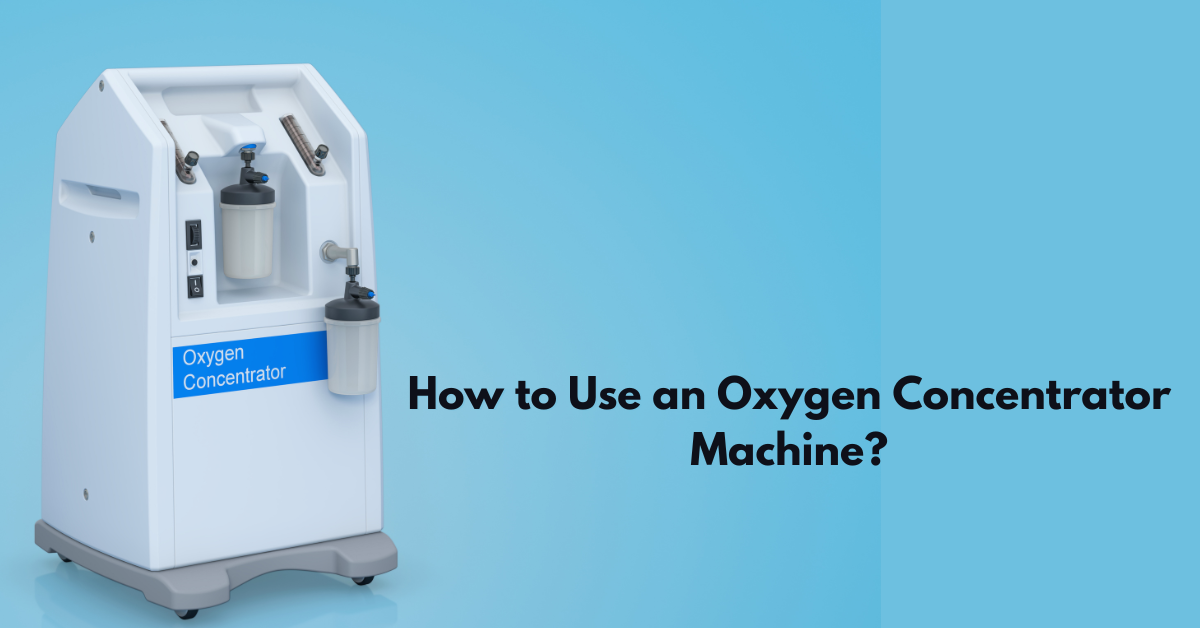Oxygen concentrators are life-saving devices for people with breathing difficulties. They provide a continuous supply of oxygen by filtering and concentrating oxygen from the surrounding air. If you or a loved one needs supplemental oxygen, understanding how to use an oxygen concentrator properly is crucial.
What is an Oxygen Concentrator?
An oxygen concentrator is a medical device that provides a high concentration of oxygen to patients with respiratory conditions. Unlike oxygen cylinders, which store oxygen, concentrators extract oxygen from the air and deliver it directly to the user.
Who Needs an Oxygen Concentrator?
Oxygen concentrators are commonly used by people with:
- Chronic obstructive pulmonary disease (COPD)
- Asthma
- Pneumonia
- Sleep apnea
- COVID-19 complications
- Other respiratory disorders
Types of Oxygen Concentrators
1. Portable Oxygen Concentrators
- Lightweight and battery-operated
- Ideal for outdoor use and travel
- Provides a lower flow rate
2. Stationary Oxygen Concentrators
- Designed for home use
- Provides higher oxygen flow rates
- Requires an electrical outlet
Key Components of an Oxygen Concentrator
- Compressor – Draws in air and compresses it
- Sieve Beds – Filters nitrogen to provide pure oxygen
- Oxygen Reservoir – Stores concentrated oxygen
- Nasal Cannula or Mask – Delivers oxygen to the user
- Control Panel – Allows users to adjust settings
How Does an Oxygen Concentrator Work?
- Draws in surrounding air
- Filters nitrogen using sieve beds
- Compresses and delivers purified oxygen
- Provides a steady supply to the user through a nasal cannula or mask
Step-by-Step Guide on Using an Oxygen Concentrator
Step 1: Choose the Right Location
- Place the machine in a well-ventilated area.
- Keep it at least 1-2 feet away from walls and furniture.
Step 2: Connect the Power Supply
- Plug the concentrator into a power outlet.
- Ensure a stable power connection to avoid disruptions.
Step 3: Attach the Nasal Cannula or Mask
- Connect the oxygen tubing to the outlet of the machine.
- Secure the nasal cannula or mask properly.
Step 4: Turn On the Machine
- Press the power button.
- Wait for a few minutes for the machine to start delivering oxygen.
Step 5: Adjust the Oxygen Flow Rate
- Set the flow rate as prescribed by your doctor.
- Do not increase or decrease the flow rate without medical advice.
Step 6: Breathe Normally
- Inhale through your nose and exhale normally.
- Ensure you are comfortable while using the device.
Safety Tips for Using an Oxygen Concentrator
- Keep the device away from open flames.
- Avoid smoking near the machine.
- Do not block air vents.
- Ensure proper ventilation in the room.
Maintenance and Cleaning of an Oxygen Concentrator
- Filter Cleaning: Clean the air filter weekly.
- Tubing Replacement: Replace the nasal cannula every 2-4 weeks.
- Surface Cleaning: Wipe the exterior with a damp cloth.
- Professional Servicing: Get it checked by a technician regularly.
Common Issues and Troubleshooting Tips
- Low Oxygen Output: Check if the tubing is blocked.
- Power Failure: Ensure the power cord is properly connected.
- Alarm Sounding: Refer to the user manual for alerts and fixes.
Benefits of Using an Oxygen Concentrator
- Provides a continuous oxygen supply.
- More cost-effective than oxygen cylinders.
- Easy to use and maintain.
- Portable options available for mobility.
Precautions When Using an Oxygen Concentrator
- Always use as prescribed by a doctor.
- Do not tamper with the oxygen flow settings.
- Keep the machine away from water and extreme temperatures.
Oxygen Concentrator vs. Oxygen Cylinder: Key Differences
| Feature | Oxygen Concentrator | Oxygen Cylinder |
|---|---|---|
| Oxygen Source | Extracts from air | Pre-filled gas |
| Power Requirement | Needs electricity | No power needed |
| Portability | Some models portable | Heavy and difficult to carry |
| Maintenance | Low maintenance | Needs refilling regularly |
Conclusion
Using an oxygen concentrator correctly can significantly improve the quality of life for those who need supplemental oxygen. By following proper usage, maintenance, and safety precautions, you can ensure a seamless experience and better respiratory health.
Also Read: Hypertension (High Blood Pressure): Causes, Symptoms, Prevention and more
FAQs About Oxygen Concentrators
1. Can I sleep while using an oxygen concentrator?
Yes, if prescribed by your doctor, you can use the concentrator while sleeping to maintain oxygen levels.
2. How long can an oxygen concentrator run continuously?
Most machines can run 24/7, but it’s recommended to give short breaks for maintenance and cooling.
3. Can I travel with a portable oxygen concentrator?
Yes, portable concentrators are allowed on airlines, but always check with the airline before traveling.
4. How do I know if my oxygen concentrator is working properly?
Check the oxygen flow, ensure no alarms are sounding, and maintain regular servicing.
5. What should I do if my concentrator stops working?
Check the power supply, restart the machine, and if the issue persists, contact a technician.
Discover more from CHO Saathi
Subscribe to get the latest posts sent to your email.








